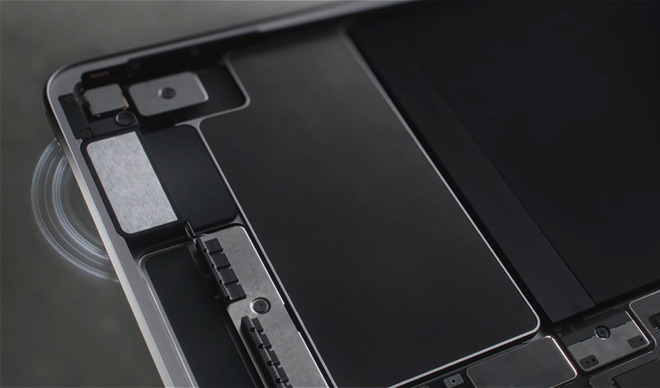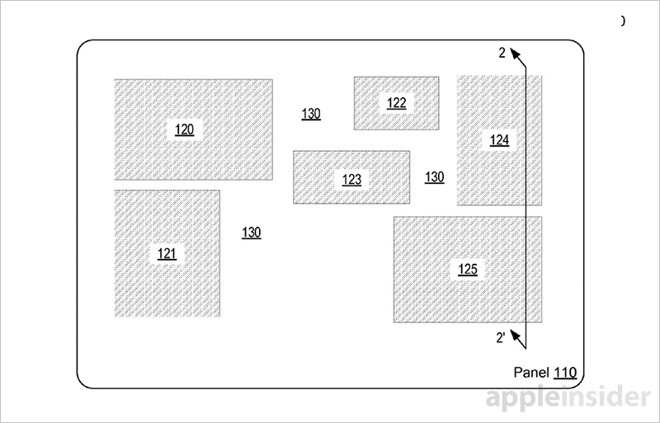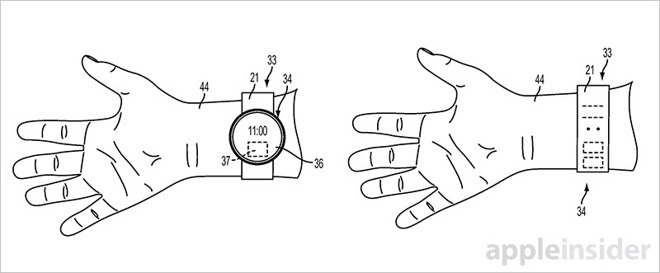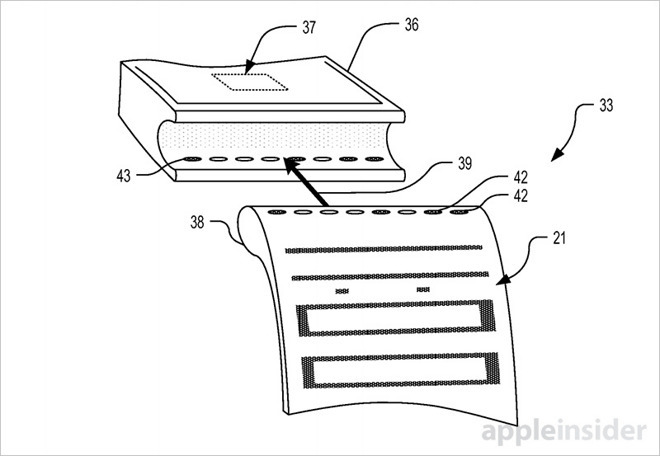Apple on Tuesday was granted a pair of patents for maximizing space in portable devices, one covering a panel acoustic system that provides high quality sound in thin enclosures and another detailing woven displays for Apple Watch.

As awarded by the U.S. Patent and Trademark Office, Apple's U.S. Patent No. 9,525,943 for a "Mechanically actuated panel acoustic system" details an audio solution that creates sound through the direct vibration of sub-panels in a substantially flat arrangement.




In basic terms, traditional dynamic speaker systems incorporate large diaphragms, usually conical in shape, that include an attached voice coil wire. The voice coil is positioned in a frame adjacent to a large permanent magnet.
When electrical current is applied to the voice coil, it creates a magnetic field that interacts with the permanent magnet to push and pull the attached diaphragm. This oscillating action, interpreted by onboard audio signal conversion components, creates waves of pressure in the air surrounding the diaphragm, thereby creating sound.
Micro speakers like those deployed in Apple's own products operate in much the same way, but on a smaller scale. Voice coils integrated with panel-like diaphragms and small permanent magnets comprise a largely self-contained system, though Apple has been looking for ways to maximize volume and minimize distortion with increasingly large back volumes.
Turning to Apple's patent, the panel-style speaker theme is taken to a new level. As described, the system is actually a large panel divided into smaller sub-panels designed to act as individual diaphragms. These panels sit above a back air volume, or cell, while voice coil motors and embedded permanent magnets provide the movement needed to generate sound.
Importantly, the panel speaker's backing frame divides and defines the sub-panels, giving each a different resonant frequency. The backing frames are supported by mid-plates connected to the front panel to reduce errant vibrations.
Since the individual sub-panels have dedicated voice coils, an onboard audio converter can send appropriate signals to distinct assemblies, thus allowing for highly accurate acoustics.
Alternative embodiments allow for designs that mount the actuator magnet to the back panel while the mid-plate holds the active voice coil. Other examples do away with the mid-plate altogether, instead securing the magnet directly to the front panel or abutting structure. A separate embodiment calls for sub-panels of the front panel to operate as diaphragms, rather than a division of the back panel.
In theory, Apple's sub-panel mechanism can be configured to reproduce high-definition sound in a relatively shallow displacement installation, suitable for thin devices like iPad and MacBook.
Interestingly, the design is somewhat similar to the speaker layout introduced with Apple's 12.9-inch iPad Pro. The iPad, however, currently employs four "self-balancing" micro speaker drivers that feed carbon fiber-capped resonance chambers, that is the carbon fiber elements are not themselves diaphragms.
Whether Apple plans to incorporate its panel speaker technology in a future product is unknown, though the company has a penchant for decreasing device footprints with each successive generation. A true panel-type speaker mechanism could go a long way in maximizing internal space, for example by nixing bulky micro drivers.
Apple's panel speaker patent was first filed for in November 2014 and credits Matthew A. Donarski, Daniel K. Boothe, Justin D. Crosby and Mitchell R. Lerner as its inventors.
A second patent grant, No. 9,521,885 for a "Woven display," details a method by which light-transmissive materials are interwoven into conventional textiles. When connected to LEDs or another light source, these light pipe fibers can render computer generated imagery, useful for secondary displays on wearable devices like Apple Watch.
As AppleInsider noted when the patent surfaced as an application last December, Apple's invention lays down light transmissive fibers like glass, polymers and nylon alongside opaque fibers to form a precise pattern. Advanced machining techniques and tools, for example three-dimensional knitting equipment, makes the design of such complex spatial designs a possibility.
Alternatively, light-transmissive sections of the hybrid woven band might be obscured or otherwise made opaque during the finishing process by applying a light-blocking substance.
Connecting the light fiber leads to a light source on the host device yields a workable, albeit low resolution, display capable of presenting users with readable information. Depending on the stitch, the woven band might display multicolor symbols or even alphanumeric characters to convey system alerts or simple notifications.
Apple's woven display patent was first filed for in May 2014 and credits Douglas J. Weber and Teodor Dabov as its inventors.
No comments :
Post a Comment